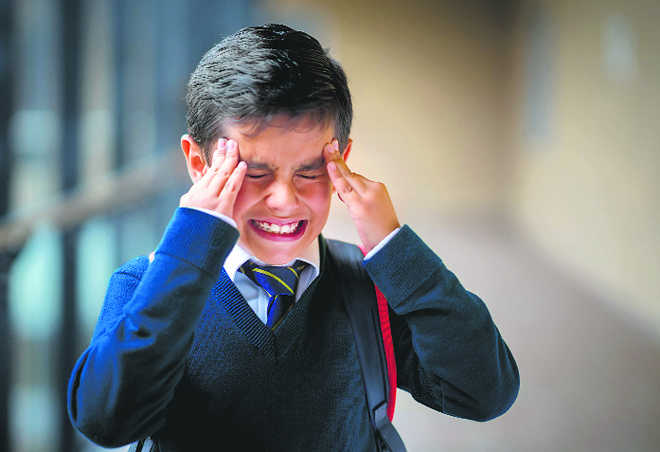Dr Jyoti Chawla
Brain tumours are generally believed to be prevalent only in adults and rarely happen in children. However, emerging data presents a contradictory picture. Every year 40,000 to 50,000 persons are diagnosed with brain tumours in India. Although these tumours are 10 times more common in adults as compared to children, the number of kids being afflicted with this harmful mass has witnessed an increase in the country in the recent years. Out of the 40000-50000 people with brain tumours, at least 20 per cent are children. It has become increasingly important to raise awareness about rising problem.
adult and paediatric tumours
Brain tumours are essentially cancerous abnormal growth inside the skull. According to a recent estimate by the World Health Organization (WHO), even though brain cancer occurs quite occasionally, it develops in about 22,000 new patients every year along with 13,000 estimated deaths. These are only second to blood cancer in overall incidence in children. Paediatric brain tumours differ from those arising in adulthood. These are significantly different in incidence, type and treatment.
In children, lifestyle-related risk factors like diet, body weight and physical activity do not play a major role like these do in many adult cancers, as it takes years for these factors to influence the risk of cancer. Compared to adults, children are more likely to have embryonal tumors, such as medulloblastoma. Also, there are higher chances of brain tumours occurring in lower parts of the brain. From the treatment point of view, sometimes radiation therapy has to be given to children in all over the brain and spine, especially in cases of embryonal tumours, which is not required in case of adults. This, unfortunately, increases the chances of progressive damage to cognitive faculties of the child.
Predisposing factors
Children with brain tumours at large have no known underlying disorder or risk factors which affect the chances of getting the disease. However, children with certain syndromes, such as neuroblastoma, which develops from the cells left behind from a baby's development in the womb, have higher risk of developing brain tumours than general population. Inherited genetic factors influence less than 5 per cent of cases wherein children inherit abnormal genes from parents. Radiation exposure due to some other treatment methods, such as the methods employed for the treatment of ringworm on the scalp, and also due to extensive use of mobile phones also reportedly influences the risk of cancers.
early signs
Timely diagnosis is vital for effective treatment. The sooner the patient is diagnosed correctly and treatment starts, the better are the chances of survival. Therefore, it is important to be aware of the early signs and symptoms of possible case for brain tumour. Usually, due to increase in brain fluid pressure which is either caused by obstruction of flow of a brain fluid called cerebrospinal fluid or caused by the impact of the weight or mass of the tumour, a child shows the following symptoms: headache, lethargy, vomiting, irritability, anorexia, poor school performance, loss of developmental milestones already achieved, and so on. Compression of brain parts like cranial nerves cause the following symptoms: impairment of vision, squint, seizures, deviation of face/mouth, weakness in any part of body, and change of speech/inability to speak.
Diagnosis and management
Once a child is diagnosed of brain tumour, treatment should immediately begin. The most common method of choice for diagnosing brain tumours is magnetic resonance imaging (MRI). The MRI is also helpful in assessing success of surgery or response to treatment. Blood tests are usually done to assess the health of the patient and can also be used to detect certain types of tumours. Sometimes, the patient may have to go for a biopsy wherein a small part of the tumour tissue is extracted, for pathological examination. Factors such as type, size and location of the tumour inside the brain influence the type of methods to be used for treatment and management. Some of the treatment methods employed include surgery through which the tumour is removed by operation, radiotherapy through which radiation is used to destroy cancerous cells and chemotherapy which is used to remove cancerous cells by using drugs. These treatment methods are severe and usually have major side effects. Long-term and close follow-up care is required. Hence, early diagnosis and early and adequate treatment becomes all the more important for better chances of survival and quality of life in children with brain tumours.
— The writer is senior consultant, paediatrics, Paras Bliss Hospital, Panchkula.
Unlock Exclusive Insights with The Tribune Premium
Take your experience further with Premium access.
Thought-provoking Opinions, Expert Analysis, In-depth Insights and other Member Only Benefits
Already a Member? Sign In Now










